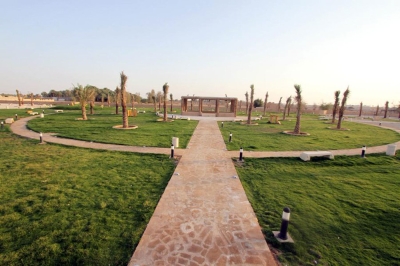
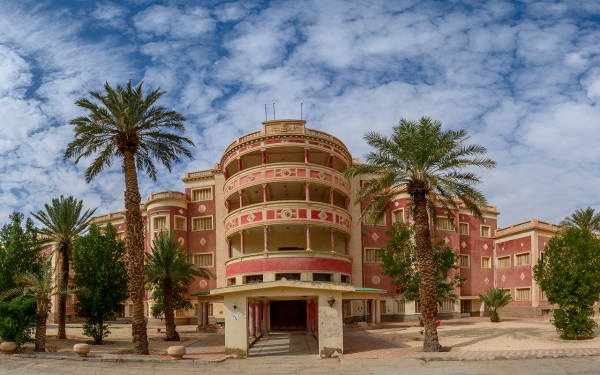
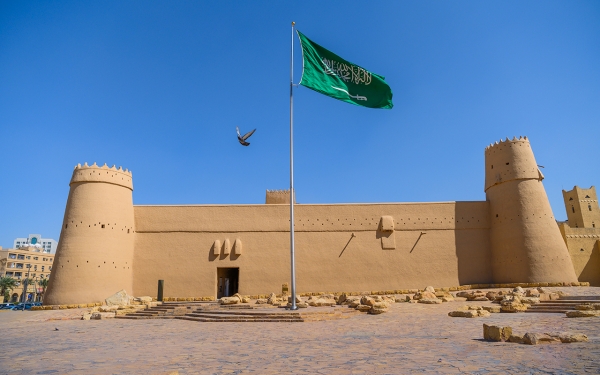
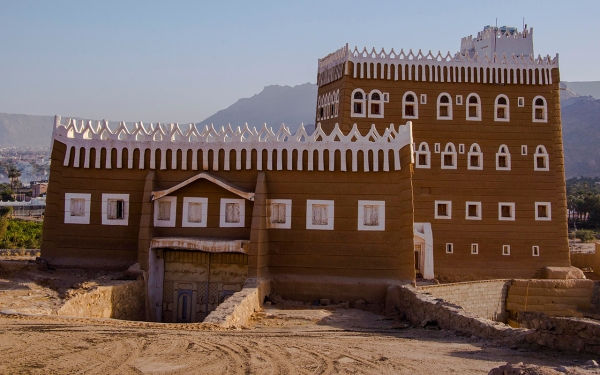
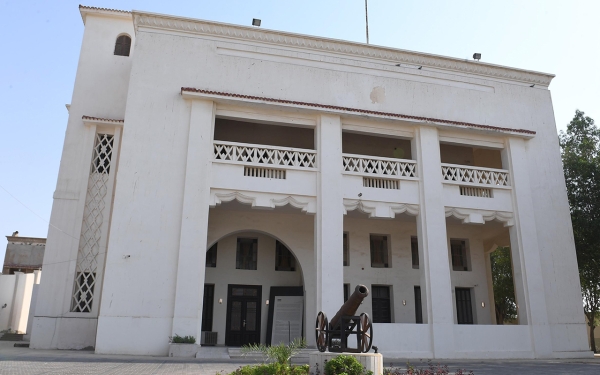
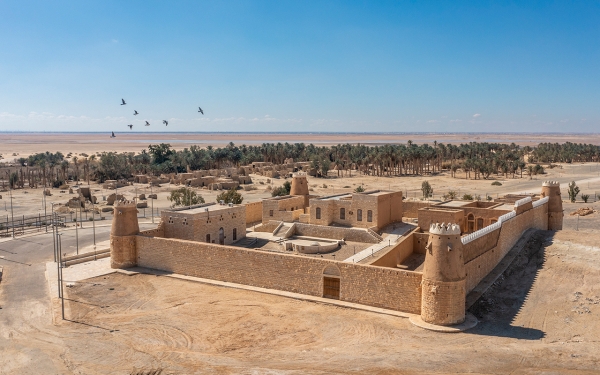
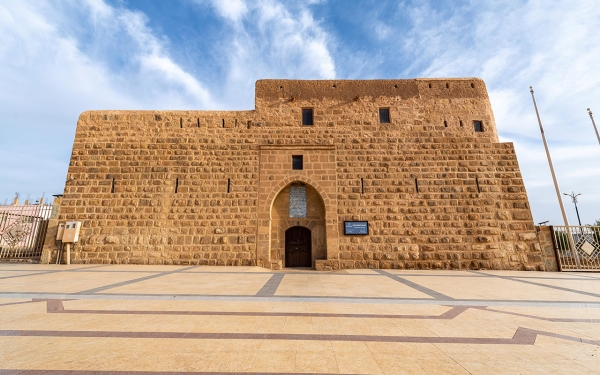
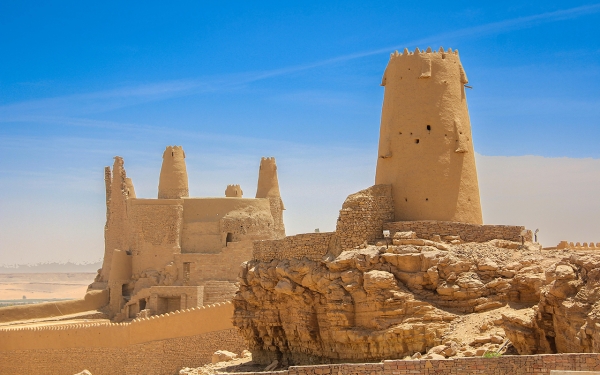
Palaces and castles in the Kingdom of Saudi Arabia: Saudi Arabia is one of the historical regions filled with archeological evidence. Palaces and castles play an important role, as they have witnessed historical events across different fields: architectural, political, and social. It is also a significant element in boosting cultural tourism. Palaces and castles exist in various provinces of Saudi Arabia. The palaces of rulers are documented for the political aspect in several provinces, most notably in Riyadh.
Importance of palaces in Saudi Arabia
Palaces played an important role in the unification and establishment of Saudi Arabia, as they were associated with the management of state affairs during the reign of the Founding King Abdulaziz Bin Abdulrahman Al Saud. Due to the importance of these palaces, Saudi Arabia has restored and re-used them. The forty-four palaces are characterized by their distinctive architectural shapes and urban construction.
Ruler palaces
The Masmak Fort, located in the capital Riyadh, is one of the most prominent ancient palaces in Saudi Arabia. It is commonly associated with Saudi Arabia's unification, as it was accessed by King Abdulaziz Bin Abdulrahman Al Saud when he restored the city of Riyadh before announcing the unification of Saudi Arabia.
The palaces of King Abdulaziz are distributed across many governorates, such as al-Badia, al-Dawadmi, al-Kharj, Jeddah, and Um Aqla, in addition to the cities of Riyadh, Buraidah, Makkah, Najran, and many others. The palaces are distinguished by their similar structure. Most of them were built from clay and stone with traditional architecture, and engraved with Islamic artistic decorations, which enriched their aesthetic side. The palaces were also distinguished by the large number of windows and huge gates. Most of the rulers’ palaces were located in the heart of the cities because they represented important political centers in culturally vital areas. With time, the palaces turned into historical tourist locations supervised by the Ministry of Tourism.
Historical palaces in Saudi Arabia
Saudi Arabia includes many historical palaces whose construction dates back to the Islamic and pre-Islamic eras, such as al-Aan Palace in Najran, whose structure goes back to 1688, and Marid Palace in Dawmat al-Jandal, whose structure probably dates back to the third century AH.
A Royal Decree was issued on November 2, 2014. It stipulated the establishment of the Law of Antiquities, Museums and Urban Heritage which guarantees the protection and rehabilitation of urban heritage sites, the documentation of information and studies associated with these sites, and registration of all urban heritage locations and buildings to protect them according to the law. Registered palaces include: Masmak Fort, Murabba Palace, al-Ahmar Palace, King Abdulaziz Palace in al-Badi`ah, Subaie House (House of Money), al-Saqqaf Palace, Khuzam Palace in Jeddah, Shubra Palace, Shadda Palace, buildings of Uqair's historic port, Ibrahim Palace, Khuzam Palace in al-Ahsa and Kaf Palace.
Historical castles in Saudi Arabia
Saudi Arabia houses several historical castles in many provinces. They consist of huge structures with many wings for all luxury life facilities. These castles are usually built for rulers and those with money and influence. They are characterized by defensive fortifications, most notably thick walls, as well as observation and protection towers. Castles may be erected in impassable locations, such as mountain peaks, while others are built on flat land.
Castles in Saudi Arabia tell a history which goes back to different eras and epochs. In Najran Province, there are several castles: al-Hasha Castle, al-Imara Palace, Castle Mountain Raum, and al-Ukhdud Castle, which is deeply rooted in history. Najran was home to successive civilizations which started the first phase of human civilization, known as the Stone Age, more than fifteen million years ago, and persisted until 2000 BC.
In Duba Governorate, Tabuk Province, King Abdulaziz Castle tells the historical sequence of the Saudi architecture in the northwest of Saudi Arabia. It was built during the reign of the founding King in 1933, at the highest spot of the ancient city, overlooking the market from the western side, as a secure palace fit for Saudi Arabia's rulers in Duba.
Tabuk Province also embraces Tabuk Castle, which has links with the site where the Prophet (Peace Be Upon Him) stayed during the Battle of Tabuk. Its structure dates back to 1568, and was restored in 1653. In 1843, it was restored and completely renovated, and was renovated once again in 1950. The castle underwent comprehensive restorations in 1992, then it was renovated and rehabilitated in 2012.
On the Duba-al-Wajh road in Tabuk, al-Azlam Castle, which is considered one of the old ancient castles in Duba Governorate, stands tall. Its construction dates back to the fourteenth century AD.
The archeological Marid Castle is located in the old town of Dumat al-Jandal in al-Jawf Province. The earliest mention of the castle dates back to the third century AD when Zenobia, the Queen of Palmyra, raided Dumat al-Jandal and Taima, but failed to break into the castle. She famously quoted, "Marid has rebelled, and Ablaq has glorified," in reference to the powerful fortification and resilience of the castle.
Excavations conducted under the lower part of the castle in 1976 unearthed some Nabataean and Roman pottery, which dates back to the first and second centuries AD.
Al-Wajh Governorate in Tabuk Province is home to al-Zarib Castle, built in 1617. It is located on a hill surrounded by several mountains in Wadi al-Zuraib, ten km east of the province.
Moreover, al-Wajh Governorate includes al-Souk or al-Balda Castle, and is one of the oldest castles built in 1276. It is located southwest of the governorate.
Related quizzes
Related articles
